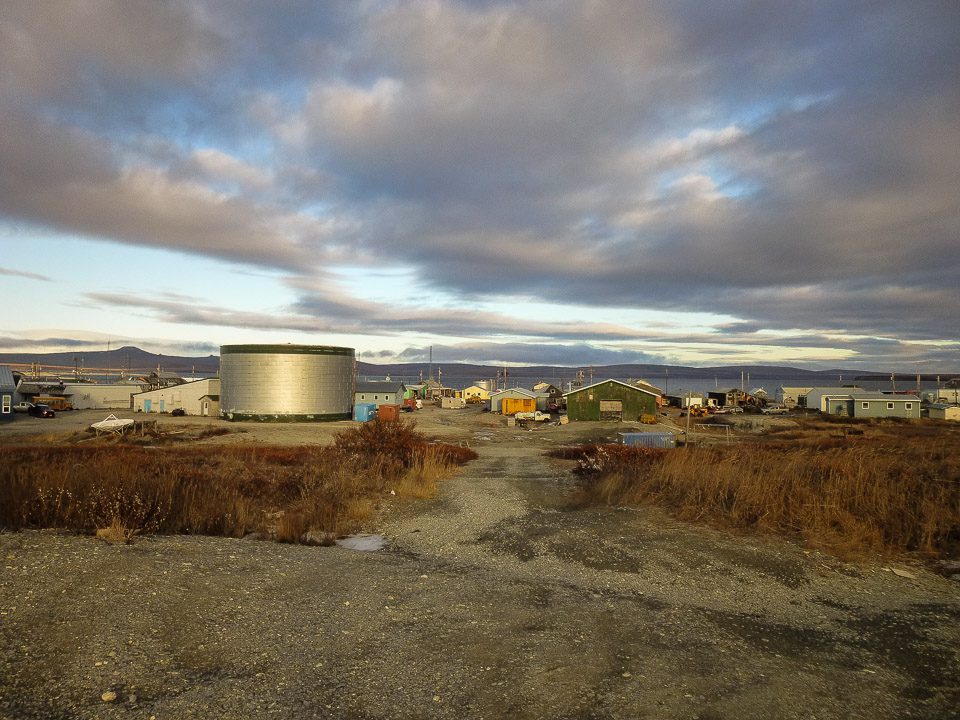Representatives from the public and private sectors are practicing drills near Teller to test what could happen if there’s an oil spill in the Bering Strait, and how they plan on cleaning it up.
“We’re in Port Clarence, we’re doing an oil spill response exercise,” said John Katula. He oversees marine vessels for the Alaska Department of Conservation, one of the agencies that’s been involved with planning Wednesday’s drill for more than a year.
“We’ve got seven of the plan holders that actually move oil in through this area involved in the exercise, so that we can make sure that if there was a spill from any of the operators that we were prepared and that our contingency plans were designed correctly to respond to any spill,” Katula explained, standing on the rocky spit leading from Teller over to Brevig Mission as the tide moved in.

It’s DEC’s job to decide whether fuel shippers are prepared to handle an accident. In the Bering Strait, companies like Crowley and Delta Western that barge fuel to small communities up and down the coast do not expect to be the ones actually cleaning up oil. Instead, they contract with Alaska Chadux, an Oil Spill Response Organization, or OSRA. Those are the companies retained in case there’s an accident, the ones who move their own equipment and personnel onto the scene and start cleaning up.
Colin Daugherty manages cleanup response for Chadux, and helped direct where to set 30-foot-long strips of orange boom (the floating tubes that help collect oil) along the shore of Teller’s inner-harbor, down-current from the tank farm.
“We brought everything to enact a Geographical Response Plan to protect Grantley Harbor,” Daugherty explained, “and the plan calls for 3600 feet of boom. So we brought two containers of boom and anchors and line. And this is equipment that’s staged in Nome. So this is permanently here for this type of event.”

Part of yesterday’s drill was testing how long it took for a convoy with equipment to drive from Nome to Teller. Organizers were interested in small but vital questions like those, because no oil spill response plan for the Bering Strait has ever actually been tested in the field. And, fittingly, with rough water and wind speeds around 20 miles-per-hour early in the morning, the crew was forced to adapt the day’s original aims.
“I don’t think we’d know how to do this in good weather,” Daugherty said. “It’s usually bad weather that causes an incident. So we came here this morning and adapted—we didn’t want to get anybody hurt over a training exercise.”
But rough weather is part of what Chadux and other agencies want to learn more about as they plan for expanded commercial activity in the Bering Strait.
“Basically, at the end of the day, it’s our job to make sure a cleanup is conducted,” said Coast Guard Petty Officer Patrick Brown, who was on hand to gauge the distance between how plans look on paper versus in the water. “If there’s a responsible party out there, then we’re just there to ensure that they do it properly. If they aren’t being responsible, aren’t doing things as they should be, then our function is to make sure that it gets done. If that means we have to do it, then so be it.”
Wednesday’s drill is hardly an answer to the looming question of what happens if there’s a large industrial accident in the Bering Strait—something critics say is less of an “if” than a “when,” as arctic shipping increases.
Many other questions remain: How will ice affect cleanup measures? What if weather keeps response crews grounded for days? How will wildlife and subsistence stocks be protected? Though they don’t expect to have everything solved, officials reconvened in Nome this morning to assess how the exercise went, and how much is still unknown.







